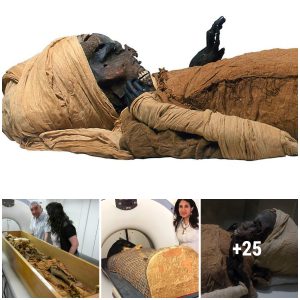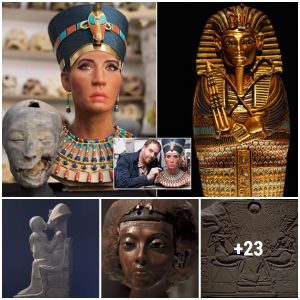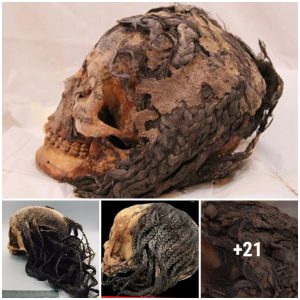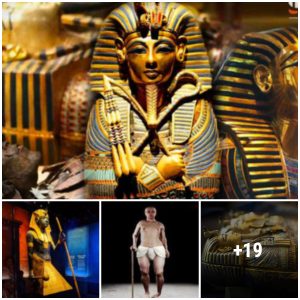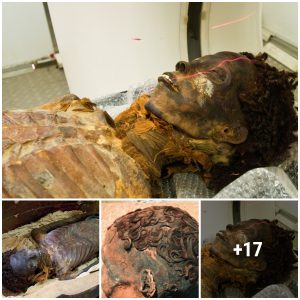Archaeologists in China have uncovered a human skull that is almost unimaginably old. While performing excavations in the central province of Hubei, a team of researchers affiliated with the Hubei Provincial Institute of Cultural Relics and Archaeology found a complete skull they identified as belonging to an archaic human who lived approximately one million years ago, during the Middle Pleistocene Epoch.

While fossilized bones from ancient hominins have been found many times before, this is the most complete archaic human skull that has been discovered dating back that far in time.
Related:
- Kayakers Found an Ancient Human Skull in the Minnesota River That Dates Back 8,000 Years Ago.
- These Odd Alien Skulls Discovered in Africa May Change the Course of History
- Mysterious Skulls-Scientists Could Not Actually Explain Their Existence
The Hubei Daily reports that the fossilized skull was excavated at the Xuetang Liangzi site in the city of Shiyan. The skull, which has been dubbed the “Yunxian Man,” was identified has having belonged to an archaic hominin known as Homo erectus , which first appeared on the earth about two million years ago.
Xuetang Liangzi Ruins ( Courtesy of Hubei Provincial Institute of Cultural Relics and Archaeology )
The discovery of the skull isn’t exactly shocking, since two Homo erectus skulls were unearthed from the same site in 1989 and 1990. However, those skulls were badly deformed by pressures associated with fossilization processes, and hence they weren’t suitable for in-depth study.
All three skulls were excavated from a layer that produced a variety of stone tools and animal fossils.
“The No. 3 skull is similar to the first two in terms of burial environment, faunal remains and technical characteristics of stone products, so the three skulls should belong to the same age,” Lu Chengqiu, the head of the Institute of Cultural Relics and Archaeology excavation team, explained in the Hubei Daily article. He noted that final confirmation of the skull’s age would come from radiocarbon dating , which will take place soon.

“Yunxian Man” No. 3 human Skull Fossil, remaining semi-unearthed. (Courtesy of the National Cultural Heritage Administration)
The archaeologists who discovered the ancient skull are proceeding carefully, to make sure they do not damage this incredibly rare and valuable fossil. So far, they’ve dug down far enough to uncover the upper half of the head, and the excavation is expected to continue at a safe pace until the skull can be removed from the ground (this is expected to happen in November).
Because the skull is complete and well-preserved, the scientists are hopeful they can learn more about the evolutionary history of Homo erectus in East Asia. Once the intact skull has been extracted a total collection of anatomical features will be available for further study and analysis. The skull will also provide excellent data on Homo erectus brain volume, and on regional variations between different versions of the species (through comparisons with Homo erectus fossils found elsewhere in the world).
This type of information is extremely useful for evolutionary scientists, who must try to reconstruct evolutionary timelines and histories from a severely limited number of high-quality samples.
Real human skull
“There are very few human fossils around one million years old,” onsite excavation leader Gao Xing confirmed, during a press conference given by China’s National Cultural Heritage Administration to announce this discovery.
“In China and East Asia, the only ones over one million years old are Yuanmou Man, which dates back to 1.7 million years ago, and Lantian Man, which is around 1.6 million to 1.2 million years old.”
What scientists can discover about this long-extinct species has clear relevance to the study of the evolution of modern humans. Homo erectus is the forerunner of Homo antecessor , the last common ancestor of both modern humans and Neanderthals. This means Homo erectus is just two steps removed from Homo sapiens (us) and features many characteristics that make it easily recognizable as one of our long-lost cousins.
According to Gao, who is a researcher with the Institute of Vertebrate Paleontology and Paleoanthropology at the Chinese Academy of Sciences, new radiocarbon dating results have shown that the famous Peking Man lived about 800,000 years ago. The Yunxian Man would have lived at least 200,000 years earlier than this, but hundreds of thousands of years after Yuanmou Man and Lantian Man were thriving in East Asia. This means that Yunxian Man occupies an intermediate position on the Homo erectus evolutionary tree in the region, which means it should possess some characteristics similar to its predecessors and some similar to its ancestors.
The Astounding Connection between History and Prehistory

Despite the fact that Yunxian Man and his group existed so long ago, the Chinese archaeologists have been able to determine certain facts about their lifestyle. Based on the artifacts and animal bones uncovered at Xuetang Liangzi, it seems this version of Homo erectus was skilled at making tools and was quite successful at hunting large mammals.
“In the same layer as the Human skull, a large number of mammal fossils have been unearthed, most of which are rhinos, elephants, horses and deer,” Gao said.
While most of the species found were herbivores, the archaeologists have also unearthed some bones that came from ancient carnivores, including different species of big cats related to modern-day tigers and leopards.
It is remarkable to discover that prehistoric hunter-gatherer cultures could be found on the planet one million years ago. This shows that the connection between ancient and modern humans is both genetic and cultural, as hunter-gatherer groups from historical times were actually following the example of people who lived thousands of generations before them.

